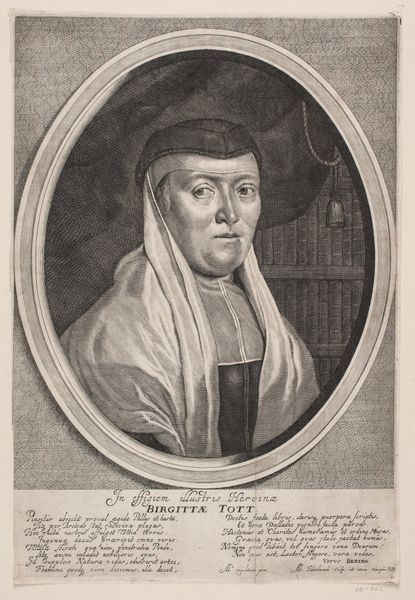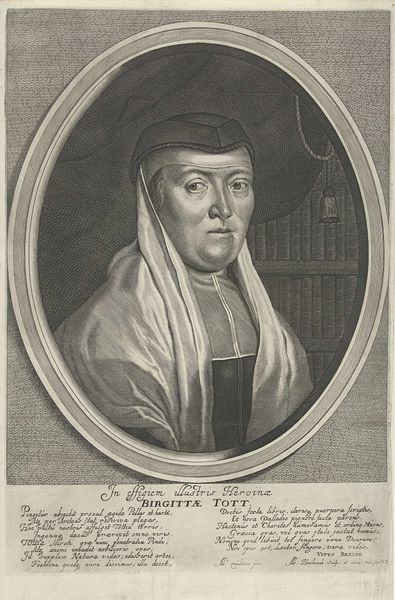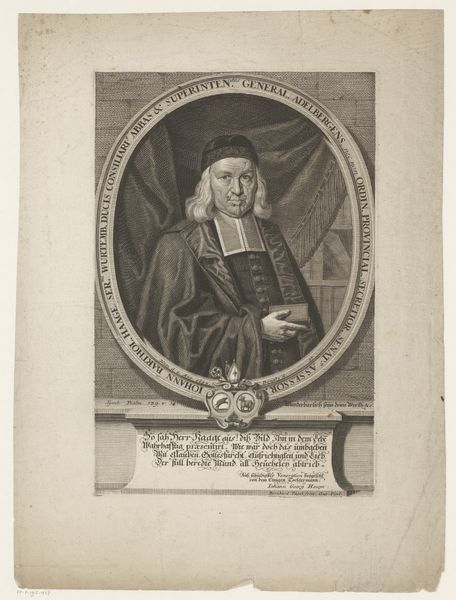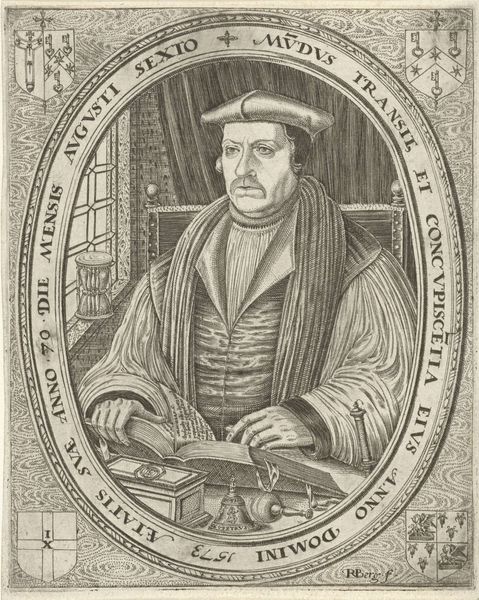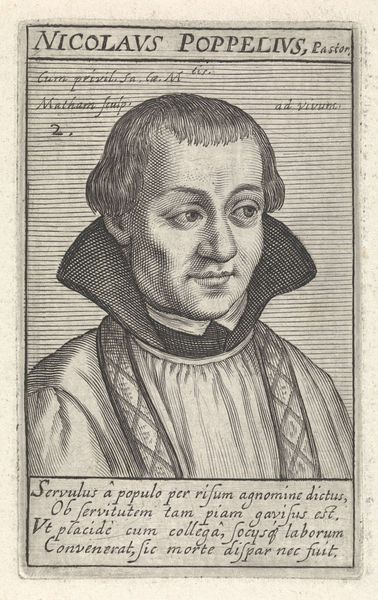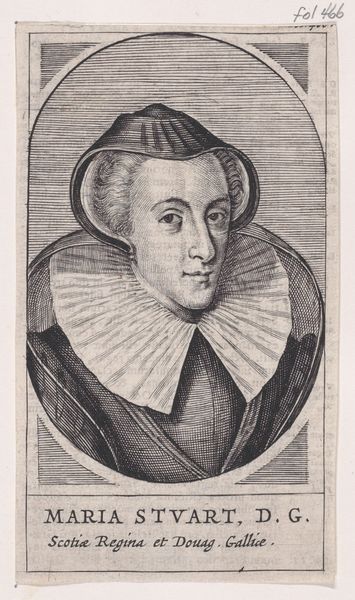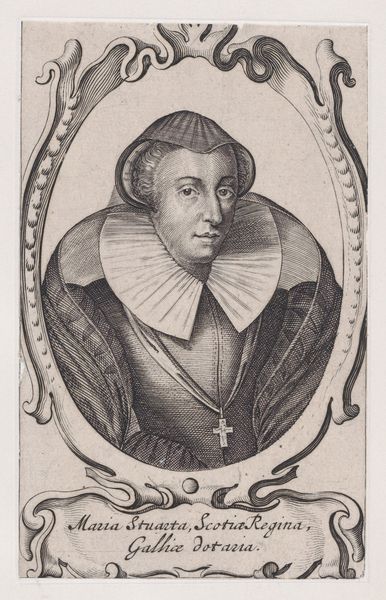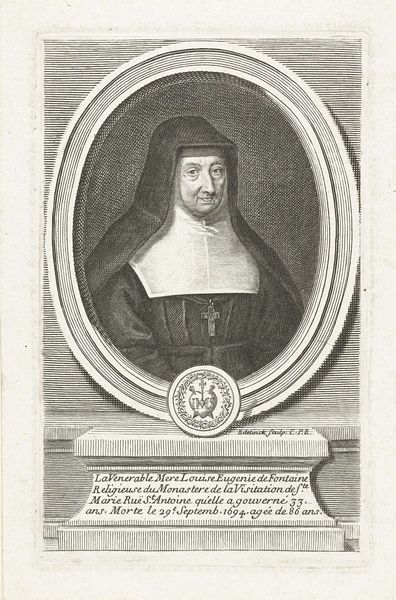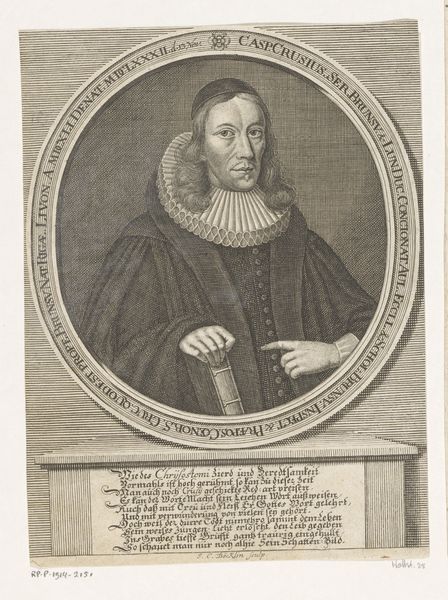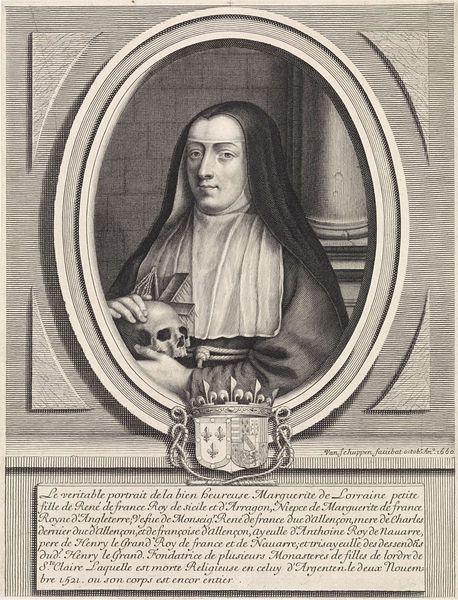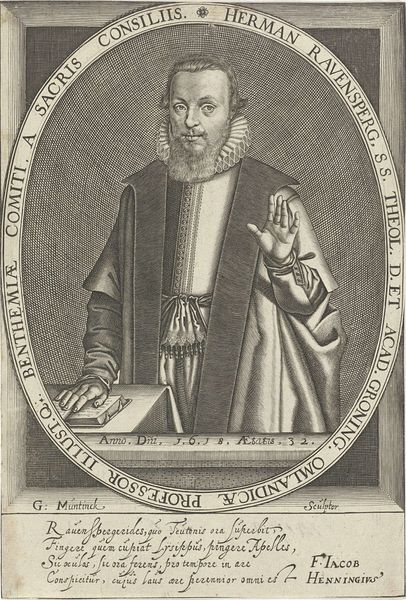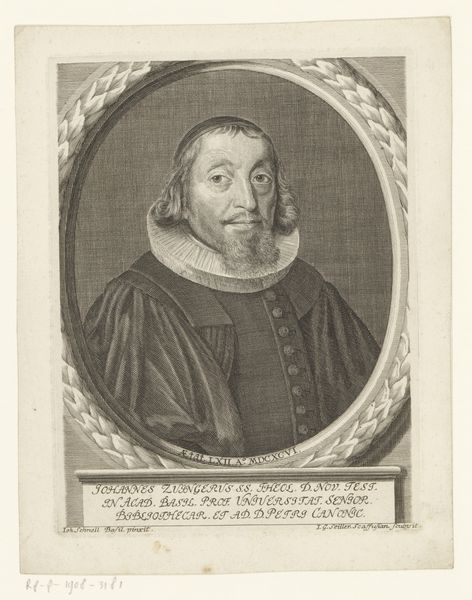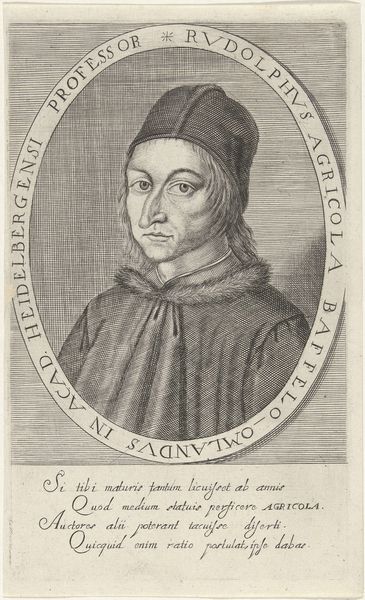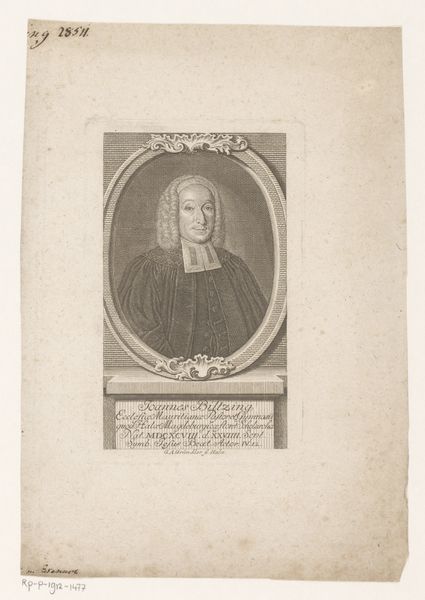
print, engraving
#
portrait
#
baroque
# print
#
engraving
#
portrait art
Dimensions: 362 mm (height) x 245 mm (width) (plademaal)
Editor: We're looking at "Birgitte Thott," a 1658 engraving by Albert Haelwegh. The subject looks rather stern and scholarly, framed in this oval with books visible in the background. What strikes me is the air of seriousness, almost defiance. How do you interpret this work? Curator: This print offers a glimpse into the public role of learned women in 17th-century society. The very existence of this portrait challenges conventional notions of gender and knowledge at the time. Consider the books in the background. They aren't just decorative. Editor: So, it's about more than just depicting her likeness? Curator: Precisely. It's about constructing and disseminating a particular image of female intellectualism. The poems inscribed below, although difficult to fully decipher now, further solidify her image as a learned woman, contributing to a larger conversation about the possibilities and limitations placed upon women in academia. Who had access to it, and what conversations was it designed to provoke? How does this image perform within the context of larger patriarchal social structures? Editor: That makes me consider how images like these contribute to building reputations and solidifying legacies, especially for those often excluded from traditional forms of power. I hadn't thought about how actively this portrait would be entering and shaping existing cultural discourse. Curator: Exactly. We have to think about the social networks and the mechanisms through which Thott was being seen and understood in the 17th century. Editor: Seeing the image through that lens changes everything for me. It becomes more of a social act, of claiming space and authority. Curator: It allows us to consider not only what we *see*, but *how* and *why* we are seeing it within its historical moment.
Comments
No comments
Be the first to comment and join the conversation on the ultimate creative platform.
